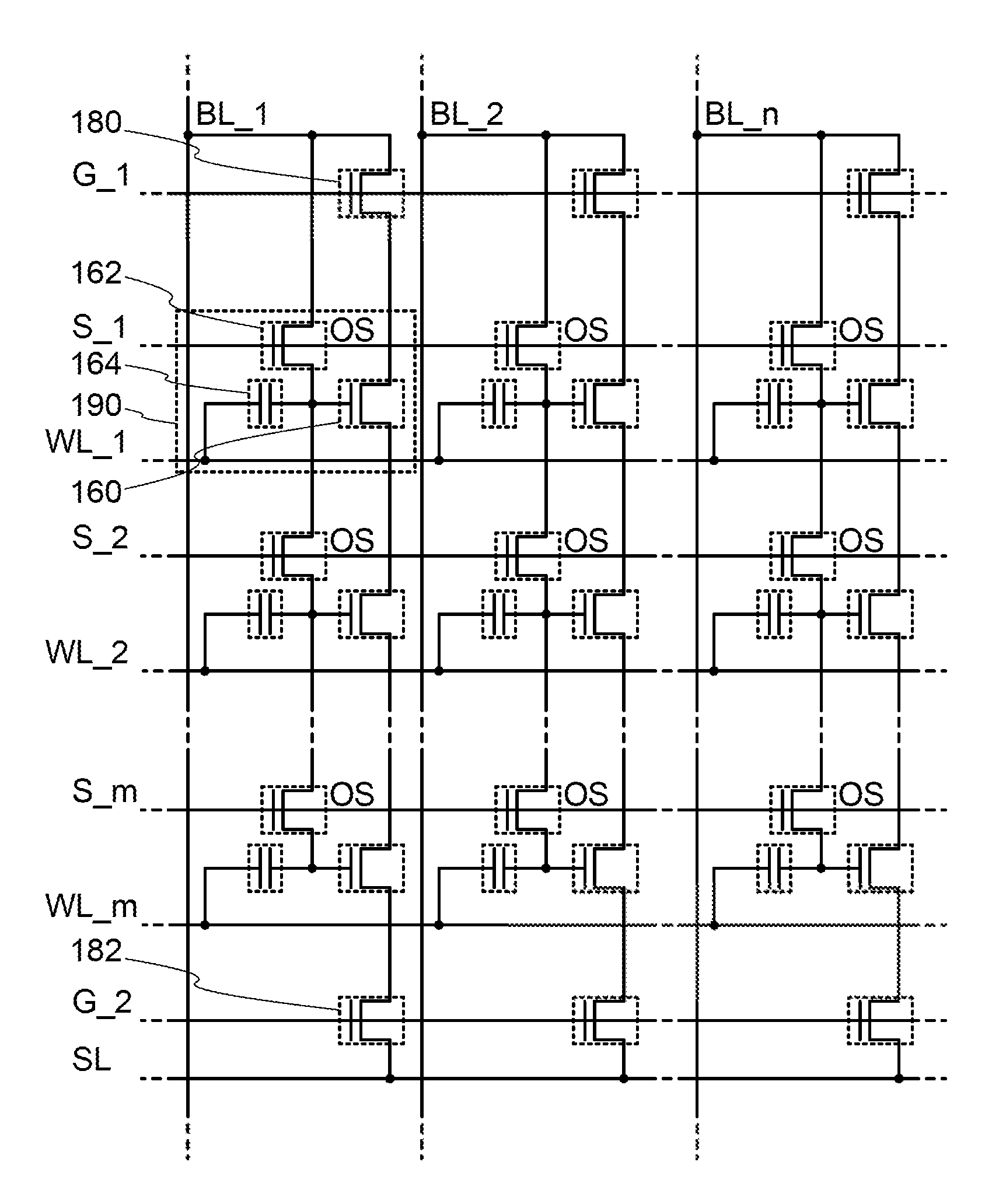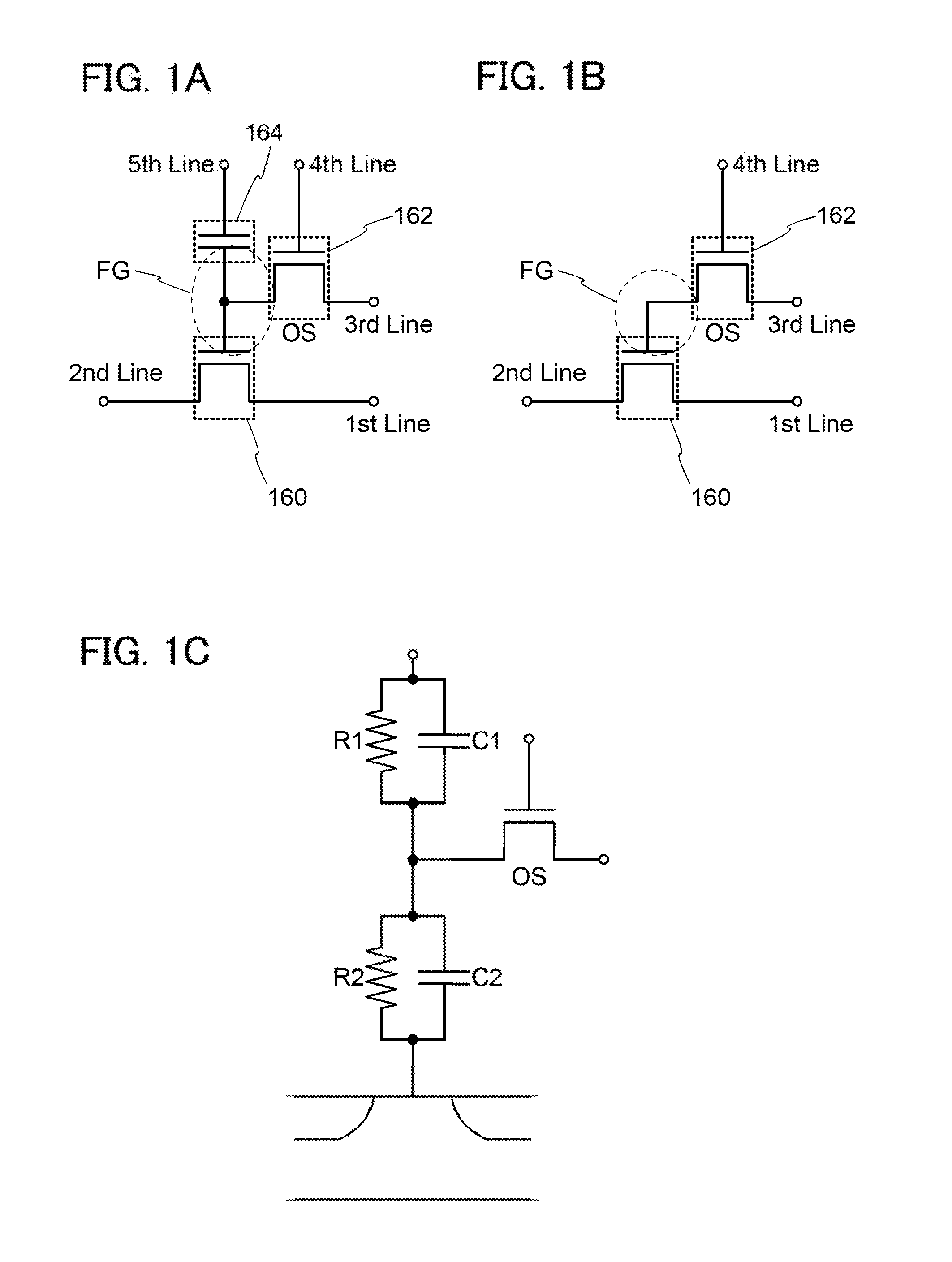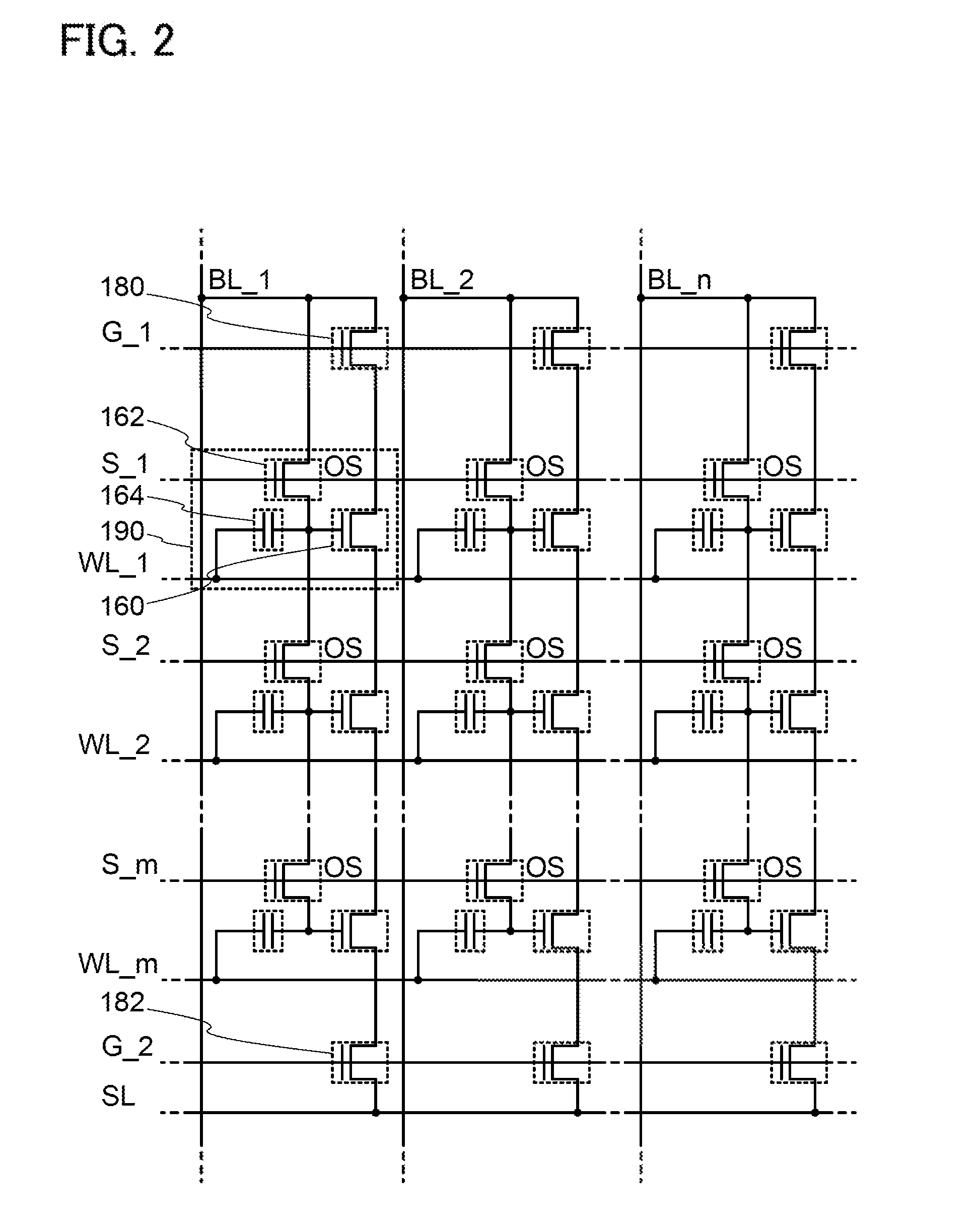Semiconductor device and driving method of semiconductor device
a technology of semiconductor devices and semiconductor devices, applied in the direction of solid-state devices, capacitors, instruments, etc., can solve the problems of long time-consuming storage of semiconductor devices, and achieve the effects of increasing the degree of integration of semiconductor devices, reducing the area occupied by memory cells, and increasing storage capacity per unit area
- Summary
- Abstract
- Description
- Claims
- Application Information
AI Technical Summary
Benefits of technology
Problems solved by technology
Method used
Image
Examples
embodiment 1
[0044]In this embodiment, a circuit structure and operation of a semiconductor device according to one embodiment of the disclosed invention, will be described with reference to FIGS. 1A to 1C, FIG. 2, FIG. 3, FIG. 4, and FIG. 5. Note that in each of the circuit diagrams, “OS” may be written, beside a transistor in order to indicate that the transistor includes an oxide semiconductor.
[0045]First, the basic circuit structure and its operation will be described with reference to FIGS. 1A to 1C. In the semiconductor device in FIG. 1A, a first wiring (a 1st line) and a source electrode (or a drain electrode) of a transistor 160 are electrically connected to each other, and a second wiring (a 2nd line) and the drain electrode (or the source electrode) of the transistor 160 are electrically connected to each other. In addition, a third wiring (a 3rd line) and a source electrode (or a drain electrode) of a transistor 162 are electrically connected to each other, and a fourth wiring (a 4th ...
application example
[0071]Next, a more specific circuit structure to which the circuit illustrated in FIGS. 1A to 1C is applied and an operation thereof will be described with reference to FIG. 2, FIG. 3, FIG. 4, and FIG. 5.
[0072]FIG. 2 is an example of a circuit diagram of a semiconductor device including m (rows) (in a vertical direction)×n (columns) (in a horizontal direction) memory cells 190. The structure of the memory cells 190 in FIG. 2 is similar to that in FIG. 1A, That is, the first wiring and the third wiring in FIG. 1A correspond to a hit line BL in FIG. 2; the second wiring in FIG. 1A, a source line SL in FIG. 2; the fourth wiring in FIG. 1A, a signal line S in FIG. 2; and the fifth wiring in FIG. 1A, a word line WL in FIG. 2. Note that in FIG. 2, the memory cells 190 in a column direction are connected in series in such a manner that the transistors 162 are connected in series and the transistors 160 are connected in series; thus, only the memory cells 190 in the first row are connected ...
embodiment 2
[0108]In this embodiment, a structure and a manufacturing method of a semiconductor device according to one embodiment of the disclosed invention will be described with reference to FIGS. 6A and 6B, FIGS. 7A and 7B, FIGS. 8A to 8C, FIGS. 9A to 9D, FIGS. 10 to 10D, FIGS. 11A to 11D, and FIGS. 12A to 12D.
[0109]FIGS. 6A and 6B illustrate an example of a structure of the memory cell 190 and the selection transistor 180 in the semiconductor device illustrated in the circuit diagram of FIG. 2. FIG. 6A illustrates a cross section of the semiconductor device, and FIG. 6B illustrates a plan view of the semiconductor device. Here, FIG. 6A illustrates a cross section taken along line A1-A2 in FIG. 6B. In FIG. 6B, a direction parallel to line A1-A2 corresponds to the column direction in the circuit diagram of FIG. 2, and a direction perpendicular to line A1-A2 corresponds to the row direction in the circuit diagram of FIG. 2. The semiconductor device illustrated in FIGS. 6A and 6B includes the ...
PUM
 Login to View More
Login to View More Abstract
Description
Claims
Application Information
 Login to View More
Login to View More - R&D
- Intellectual Property
- Life Sciences
- Materials
- Tech Scout
- Unparalleled Data Quality
- Higher Quality Content
- 60% Fewer Hallucinations
Browse by: Latest US Patents, China's latest patents, Technical Efficacy Thesaurus, Application Domain, Technology Topic, Popular Technical Reports.
© 2025 PatSnap. All rights reserved.Legal|Privacy policy|Modern Slavery Act Transparency Statement|Sitemap|About US| Contact US: help@patsnap.com



